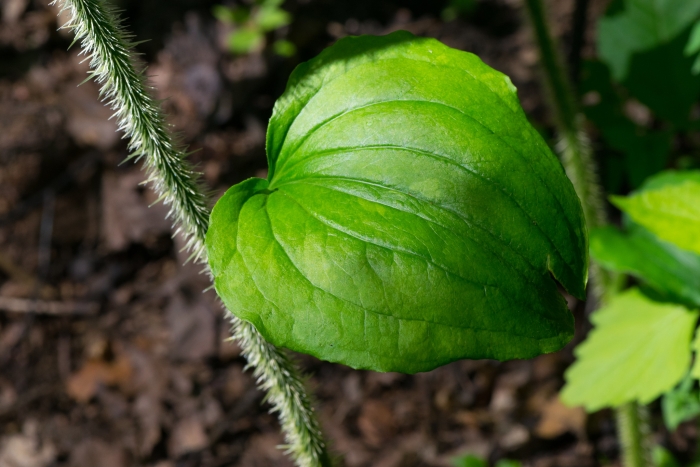Bristly Greenbrier
(Smilax tamnoides)
Bristly Greenbrier (Smilax tamnoides)
/
/

Joshua Mayer
CC BY-SA 2.0
Image By:
Joshua Mayer
Recorded By:
Copyright:
CC BY-SA 2.0
Copyright Notice:
Photo by: Joshua Mayer | License Type: CC BY-SA 2.0 | License URL: https://creativecommons.org/licenses/by-sa/2.0/ | Uploader: wackybadger | Publisher: Flickr |

















































Estimated Native Range
Summary
Smilax tamnoides, commonly known as bristly greenbrier, is a climbing, prickly vine native to a variety of habitats including moist woodlands, thickets, and along stream banks in the eastern United States and Canada. It is a vigorous grower that uses tendrils to support itself on other vegetation, reaching lengths of up to 15 feet (4.5 meters). The leaves are broad and heart-shaped, with prickly stems and leaf veins. Flowers are small, green to brown, and grow in clusters called umbels from late spring to early summer. Although not showy, they are numerous and followed by clusters of blue to black berries that lack the waxy coating common in other Smilax species. These fruits are attractive to wildlife, particularly birds.
Bristly greenbrier is valued for its ability to form dense thickets, providing excellent cover for wildlife. It is often used for naturalizing in wild gardens or as a barrier plant due to its prickly nature. In cultivation, it adapts well to a range of conditions but prefers full sun to partial shade. It is tolerant of various soil types, provided they have good drainage, and requires medium amounts of water. While it is not commonly afflicted by serious diseases or pests, its vigorous growth can make it invasive in some areas, so care should be taken to manage its spread.CC BY-SA 4.0
Bristly greenbrier is valued for its ability to form dense thickets, providing excellent cover for wildlife. It is often used for naturalizing in wild gardens or as a barrier plant due to its prickly nature. In cultivation, it adapts well to a range of conditions but prefers full sun to partial shade. It is tolerant of various soil types, provided they have good drainage, and requires medium amounts of water. While it is not commonly afflicted by serious diseases or pests, its vigorous growth can make it invasive in some areas, so care should be taken to manage its spread.CC BY-SA 4.0
Plant Description
- Plant Type: Vine
- Height: 9-10 feet
- Width: 4-6 feet
- Growth Rate: Moderate
- Flower Color: N/A
- Flowering Season: Spring, Summer
- Leaf Retention: Evergreen
Growth Requirements
- Sun: Full Sun, Part Shade
- Water: Medium
- Drainage: Slow, Medium, Fast
Common Uses
Bank Stabilization, Bee Garden, Bird Garden, Drought Tolerant, Edible*Disclaimer: Easyscape's listed plant edibility is for informational use. Always verify the safety and proper identification of any plant before consumption.
Natural Habitat
Moist woodlands, thickets, and along stream banks
Other Names
Common Names: Hag Briar, Hellfetter, Chinaroot
Scientific Names: , Smilax tamnoides, Smilax tamnoides var. hispida, Smilax hispida var. australis, Smilax hispida var. montana, Smilax grandifolia, Smilax tamnoides var. tamnoides, Dilax muricata,
GBIF Accepted Name: Smilax tamnoides L.